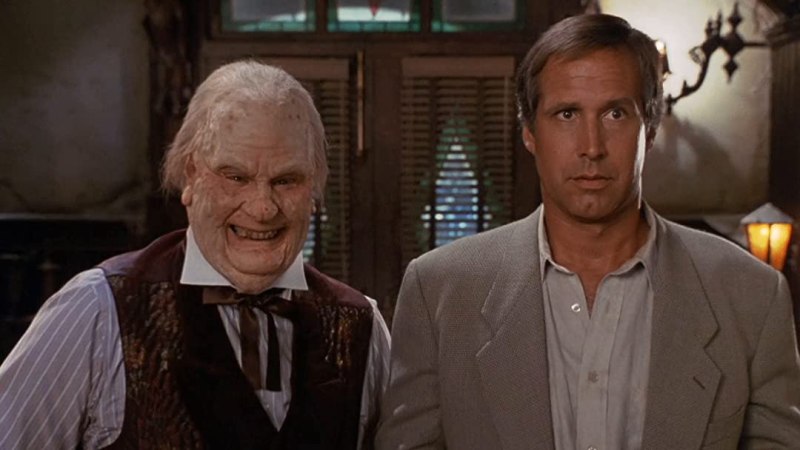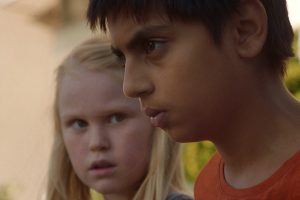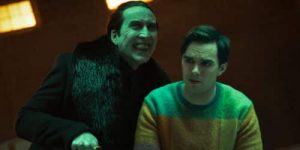If you’ve spent any time perusing the current offerings on streaming services, you know that there are plenty of unequivocally bad films out there. In fact, most movies available for streaming are bad, and these bad films make up the bulk of their respective platform’s libraries. If you didn’t have the displeasure of watching Dan Akroyd’s Nothing But Trouble (1991) before, it is now one of the thousands of terrible films you can stream from the comfort of your own home. While the film will give you that familiar (at least for me) “what the hell am I watching” feeling, it does so in the worst possible ways.
I don’t typically research films that much before I review them. I prefer to limit my opinions to how I really felt about a film, untainted by outside sources. However, in this case, I really needed to know how and why Nothing But Trouble was made. Sadly, I came away with more questions than answers. Apparently, Dan Akroyd went to see Hellraiser (1987) and noticed that some of the moviegoers were laughing at the film. I immediately took issue with this story. Yes, some people do laugh at horror films to assuage their fear and sure, the original Hellraiser may have had some questionable performances, but I find it hard to believe that audiences were guffawing in the theater.
Anyway, this event apparently had a profound effect on Dan Akroyd and his younger brother, Peter. The brothers suddenly realized that horror films could also be funny. Evidently, the pair had never heard of the horror-comedy genre, even though it had been around since before Abbott and Costello met Frankenstein in 1948. So, Peter set about writing a screenplay based on a very uninteresting event in Dan’s life. One time Dan was pulled over for speeding in upstate New York and ended up having tea with the local justice of the peace. So, now that you understand the fantastic inspiration these guys were working from, let’s dig into Nothing But Trouble.
Financial publicist Chris Thorne (Chevy Chase) meets attorney Diane Lightson (Demi Moore) at a swanky party in Manhattan. Diane desperately needs to get to Atlantic City for work, and Chris agrees to take her. Despite trying to avoid them, Chris is forced to let two of his clients, Fausto and Renalda, join them. On the way, Chris takes a detour and gets lost in the fictional village of Valkenvania.
He rolls through a stop sign and tries to get away from the pursuing police officer (played by John Candy), only to get caught after a high-speed chase. Officer Dennis Valkenheiser escorts the group to the home of his 109-year-old grandfather and the village’s only judge, Alvin Valkenheiser (Dan Akroyd). After Chris accidentally offends the judge, Valkenheiser throws them in a cell to be sentenced the next day. While in captivity, they overhear the judge executing a group of drug dealers using a giant roller coaster death machine.

That night, the group is given the opportunity to have dinner with the judge, where they learn that he hates bankers and blames them for his family’s financial ruin. This is the primary reason he refuses to let Chris and his friends go. When they attempt to escape, the group is caught by the judge’s mute granddaughter, Eldona (played by John Candy in drag). After Fausto and Renalda manage to escape, Chris and Diane are left to fend for themselves and survive among the many traps and snares set by the Valkenheiser family.
There are almost too many things fundamentally wrong with Nothing But Trouble to put them all in writing. Much of the budget was spent on building large, ugly sets. The Valkenheiser estate is a dilapidated house filled with convoluted and nonsensical mechanisms. The property is an enormous junkyard, complete with a deadly roller coaster, a toxic moat, and a drawbridge. All of it feels like something a 10-year-old might imagine off the top of their head.
There’s also a very bizarre attempt to force in two largely unnecessary characters, Fausto and Renalda (played by Taylor Negron and Bertila Damas). Chris describes them as “Brazilianaires,” and this very basic pun seems to be the only reason they’re in the film. To make things even worse, the filmmakers clearly knew nothing about people born outside of the United States. The two “Brazilians” make reference to cities in Brazil, but they speak Spanish and possess Argentine passports. It’s so easy to do 5 minutes of research and rewrite the characters, but why do that when you have a joke as good as Brazilianaires?

Nothing But Trouble makes several obvious nods to much better films, namely The Texas Chainsaw Massacre and Psycho. The characters frequently stare through random holes in walls to see what’s going on in the rest of the house, while the Valkenheiser family is comprised of (mostly) bizarre, inbred hillbillies. The latter characterization is most obvious thanks to a pair of giant, deformed “babies,” Bobo and Lil’ Debbull, members of the Valkenheiser family who are forced to live outside.
In case you are worried that the film doesn’t include enough cringe-worthy tropes of early 90s cinemas, don’t stress. Rap group Digital Underground makes an appearance, including Tupac Shakur in his film debut. The rappers appear before the judge and perform an impromptu and incredibly bad song to get out of being convicted. And that’s it. There’s nothing more to that particular subplot.
Watching Nothing But Trouble is like living through a very unpleasant fever dream. The film is ugly to look at and there is absolutely nothing funny or frightening about it. The “gross-out” humor is not all that gross, and the horrific elements are more annoying than anything else. As one might expect with a film that’s largely driven by Dan Akroyd’s comedic vision, Nothing But Trouble is built from a series of disjointed sketches, none of which lands. When you throw in some terrible storytelling, head-scratching ancillary characters, and half-hearted attempts at childish horror, you’re left with one of the worst films you’ll ever have the misfortune of watching.



